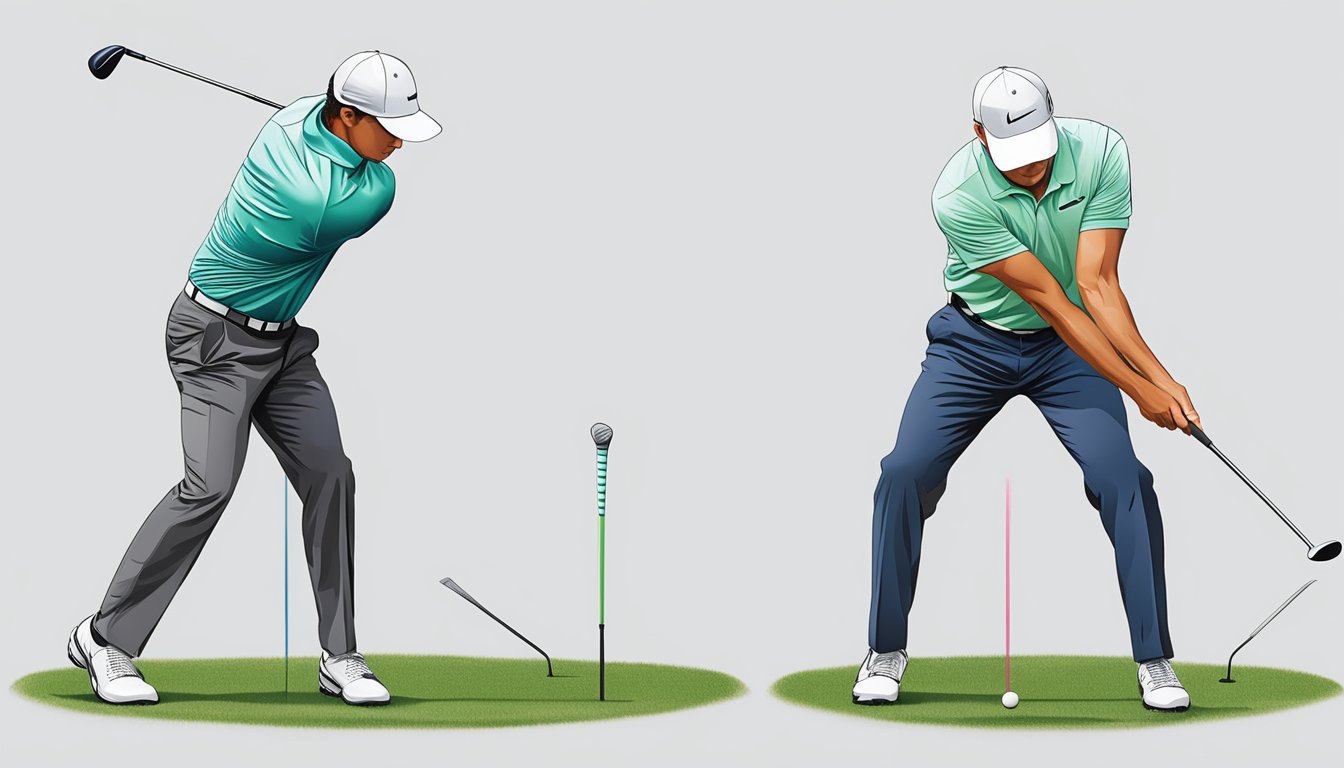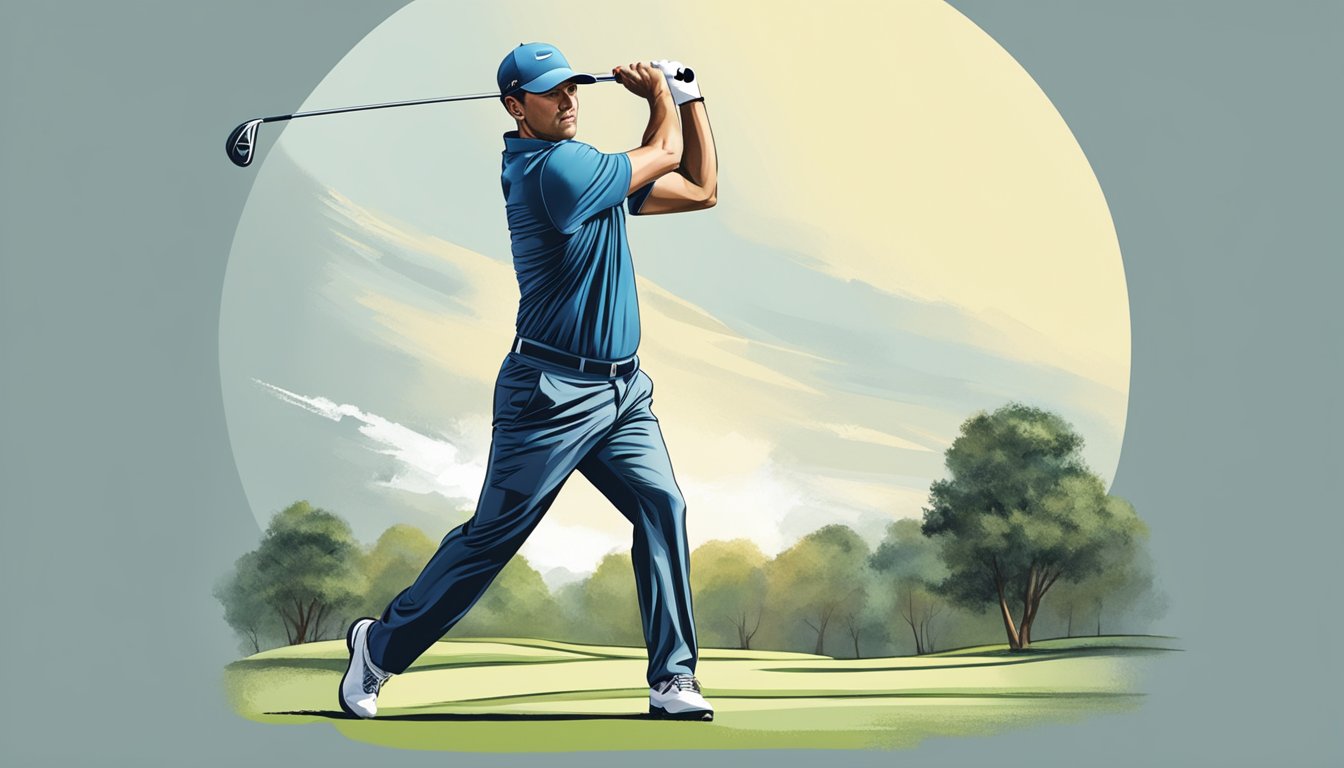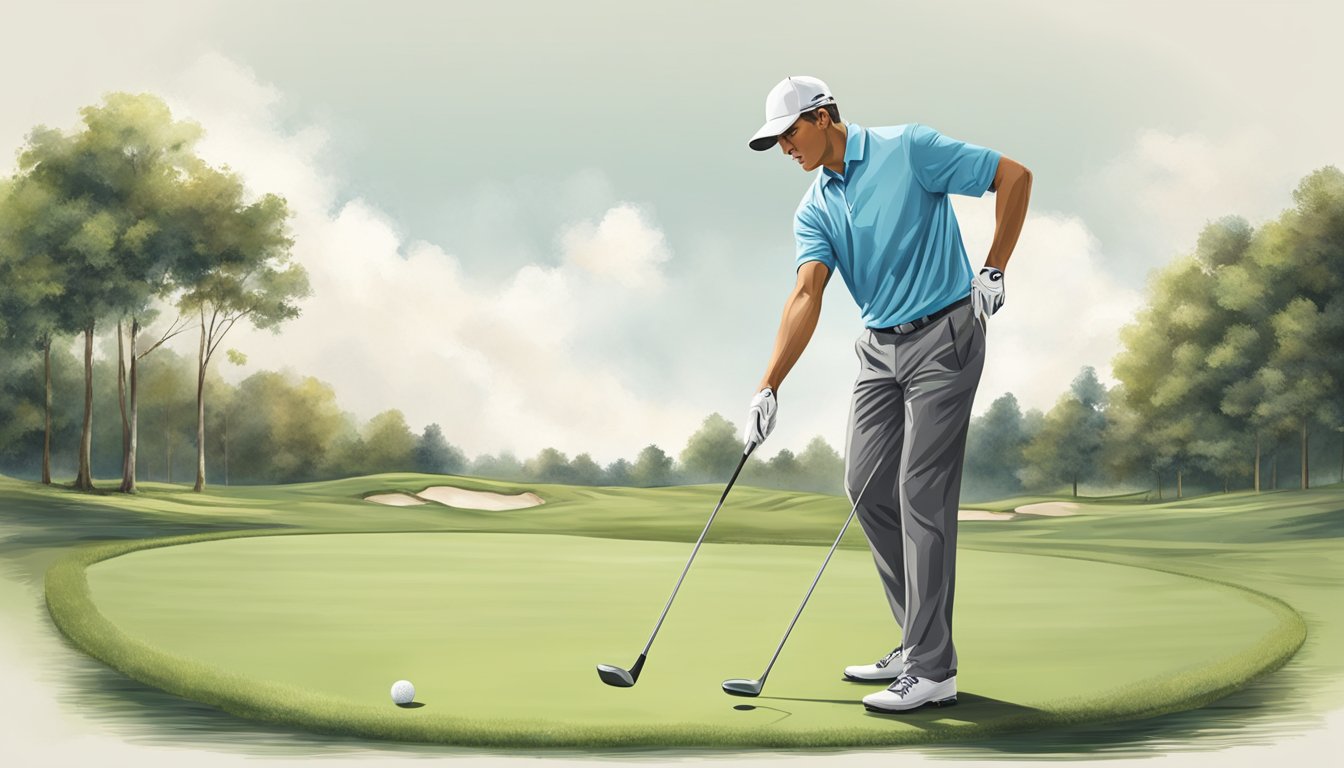If you’re new to golf, one of the first things you’ll need to learn is how to address the golf ball with a driver. A good address position will set you up for a successful swing. But even seasoned golfers can benefit from a refresher on the basics. In this article, we’ll cover everything you need to know to set up for a great shot with your driver.
Understanding the basics of how to address the golf ball with a driver is key to improving your game. We’ll start by discussing the proper stance and ball position, and how to align your body with the target. We’ll also cover how to grip the club and where to position your hands. Once you have these fundamentals down, you’ll be ready to move on to more advanced techniques.
Setting up for success is only part of the equation. You’ll also need to have the perfect swing to hit the ball where you want it to go. We’ll cover the basics of the golf swing, including how to take a proper backswing and follow-through. We’ll also discuss how to generate power and accuracy with your driver. By the end of this article, you’ll have all the tools you need to drive the ball like a pro.
Key Takeaways
- Understanding the basics of how to address the golf ball with a driver is key to improving your game.
- Setting up for success is only part of the equation. You’ll also need to have the perfect swing to hit the ball where you want it to go.
- By the end of this article, you’ll have all the tools you need to drive the ball like a pro.
Understanding the Basics
https://www.youtube.com/watch?v=VwUWRR-9PRo&embed=true
The Importance of Addressing the Ball
Addressing the ball is one of the most important aspects of golf. It sets the foundation for the rest of your swing and can greatly impact your shot. Properly addressing the ball allows you to take a consistent swing, which is essential for a good golf game.
When addressing the ball, make sure to stand in a comfortable position with your feet shoulder-width apart. Your knees should be slightly bent, and your weight should be evenly distributed between your feet. This will help you maintain your balance throughout your swing.
The Role of the Driver
The driver is the longest club in your bag and is used to hit the ball the farthest. It has a large head and a long shaft, which makes it more difficult to control than other clubs.
When addressing the ball with a driver, you should tee the ball up higher than you would with other clubs. This will allow you to hit the ball on the upswing, which will create more distance. Make sure the ball is positioned just inside your front heel, and your shoulders are aligned with your target.
Remember, addressing the ball properly is key to a successful golf game. Take the time to practice your stance and swing, and you’ll see improvement in no time.
Setting Up for Success
https://www.youtube.com/watch?v=5KE-bLyh5ys&embed=true
When it comes to addressing the ball with a driver, setting up for success is crucial. Proper stance, posture, grip, and clubface alignment can make all the difference in your swing.
Stance and Posture
Your stance and posture are the foundation of your swing. To start, stand with your feet shoulder-width apart and your toes pointing straight ahead. Your weight should be evenly distributed between your feet. Keep your knees slightly bent, but not too much, and your back straight.
Next, tilt your hips forward slightly and stick your rear end out a bit. This will help you maintain your balance throughout your swing. Finally, relax your arms and let them hang naturally.
Grip and Clubface Alignment
Your grip and clubface alignment are also important factors in addressing the ball with a driver. To grip the club properly, hold it with your left hand first, with your thumb pointing straight down the shaft. Then, place your right hand on the club, with your left thumb nestled in the lifeline of your right hand.
When it comes to clubface alignment, make sure the face of the club is square to your target. This means that the clubface is perpendicular to your target line. Use an alignment stick or a club to check your alignment before you address the ball.
In conclusion, setting up for success is all about getting your stance, posture, grip, and clubface alignment just right. Take the time to practice these fundamentals, and you’ll be well on your way to a better swing.
The Perfect Swing
If you want to hit the ball long and straight, you need to have a good swing. The perfect swing is a combination of proper swing mechanics, good rhythm, and consistent pace.
Swing Mechanics
Swing mechanics are the foundation of a good golf swing. Your swing mechanics include your grip, stance, alignment, and posture. To address the ball with a driver, you should stand with your feet shoulder-width apart and your toes pointing slightly outward. Your knees should be slightly flexed, and your weight should be evenly distributed between your feet.
Your grip should be firm but not tight, and your hands should be positioned on the club so that your thumbs are pointing down the shaft. Your clubface should be square to the ball, and your shoulders should be parallel to the target line.
Impact and Follow Through
Impact is the moment when the clubhead meets the ball. At impact, your weight should be shifting from your back foot to your front foot, and your hips should be rotating toward the target. Your hands should be leading the clubhead, and your wrists should be fully extended.
After impact, your follow-through is just as important as your swing mechanics. Your follow-through should be smooth and fluid, with your arms extending fully and your club finishing high. This will help you maintain your balance and generate more power.
In conclusion, the perfect swing is a combination of proper swing mechanics, good rhythm, and consistent pace. By focusing on your grip, stance, alignment, and posture, you can improve your swing mechanics and hit the ball longer and straighter. And by focusing on your impact and follow-through, you can generate more power and maintain your balance for a more consistent swing.

Advanced Techniques
« Proper maintenance and care for your golf glove: tips for cleanliness and longevity
Wilson Infinite Putter Review: A Comprehensive Look at the Latest Model »
Controlling Ball Flight
Controlling the ball flight is an essential skill for any golfer. With a driver, you can control the ball flight by adjusting the angle of attack. The angle of attack is the angle at which the clubface strikes the ball. If you want to hit a high ball flight, you need to hit the ball with a positive angle of attack. Conversely, if you want to hit a low ball flight, you need to hit the ball with a negative angle of attack.
To achieve a positive angle of attack, you need to hit up on the ball. To do this, you need to position the ball forward in your stance. This will allow you to hit up on the ball and create a higher ball flight. On the other hand, to achieve a negative angle of attack, you need to hit down on the ball. To do this, you need to position the ball back in your stance. This will allow you to hit down on the ball and create a lower ball flight.
Increasing Drive Distance
Increasing your drive distance is a goal for many golfers. One way to achieve this is by increasing your swing speed. To increase your swing speed, you need to focus on your body rotation. Your body rotation is what generates power in your swing.
To increase your body rotation, you need to focus on your hip turn. Your hips should rotate towards the target during your downswing. This will allow you to generate more power and increase your swing speed. Additionally, you should focus on maintaining a right angle of attack. This means that the clubface should be perpendicular to the target line at impact. This will allow you to maximize your distance and hit longer drives.

Another way to increase your drive distance is by optimizing your launch angle. The launch angle is the angle at which the ball leaves the clubface. To optimize your launch angle, you need to focus on your ball position and clubface angle. A good rule of thumb is to position the ball forward in your stance and tee it up high. Additionally, you should focus on maintaining a positive angle of attack and a slight upward angle of the clubface at impact. This will allow you to create a high launch angle and maximize your distance.
Common Mistakes and How to Avoid Them
https://www.youtube.com/watch?v=miXs_Oj_BzM&embed=true
When addressing the golf ball with a driver, there are some common mistakes that golfers make. Here are some tips on how to avoid them and improve your game.
Addressing Slices and Pulls
One common mistake that golfers make is slicing or pulling the ball. This can be caused by an open or closed clubface at impact. To address this, make sure that your clubface is square at impact. You can also adjust your grip to help square the clubface. If you tend to slice the ball, try strengthening your grip. If you tend to pull the ball, try weakening your grip.
Improving Contact and Consistency
Another common mistake that golfers make is poor contact with the ball. This can be caused by hitting the ball too high or too low on the clubface. To improve your contact and consistency, make sure that you are hitting the ball on the sweet spot of the clubface. This will help you achieve maximum distance and accuracy.

To find the sweet spot, try placing an impact tape on the clubface. This will show you where you are hitting the ball on the clubface. You can also use a clubface spray to help you see where you are making contact with the ball.
Another way to improve your contact and consistency is to work on your swing tempo. A smooth and consistent swing will help you make solid contact with the ball. Practice swinging at a slower tempo until you can make consistent contact with the ball.
By avoiding these common mistakes and focusing on improving your swing, you can address the ball with a driver like a pro.
Frequently Asked Questions
https://www.youtube.com/watch?v=q1_FVzPrzYY&embed=true
What is the ideal distance between the golf ball and the driver during setup?
The ideal distance between the golf ball and the driver during setup is such that the ball is teed up high enough so that the center of the ball is level with the top of the driver’s face. This will ensure that you make contact with the ball at the sweet spot of the clubface, which will result in maximum distance and accuracy.
What are some tips for setting up with a driver in golf?
When setting up with a driver in golf, you should start by standing behind the ball and choosing a target. Then, you should align your body to the target line and set your ball position according to the club you’re using. It’s important to establish a comfortable grip and adopt a good posture. Finally, you should take a few practice swings to get a feel for the swing and then step up to the ball and execute the shot.
How should a beginner position their feet when addressing the ball with a driver?
A beginner should position their feet shoulder-width apart when addressing the ball with a driver. The feet should be parallel to the target line, with the toes pointing slightly outward. This will provide a stable base for the swing and help to maintain balance throughout the shot.
What are the consequences of having the driver ball position too far forward?
If the driver ball position is too far forward, it can result in a number of problems. First, it can cause you to hit the ball with the clubface open, which will result in a slice. Second, it can cause you to hit the ball on the upswing, which will result in a higher ball flight and less distance. Finally, it can cause you to hit the ball off the heel of the club, which will result in a loss of power and accuracy.
Where should the hands be placed during driver setup?
The hands should be placed on the grip of the club so that they are in a comfortable and natural position. They should be positioned so that the left hand is slightly ahead of the ball and the right hand is slightly behind the ball. This will help to promote a proper swing path and ensure that the clubface is square at impact.
How do you properly line up the face of the driver at address?
To properly line up the face of the driver at address, you should start by standing behind the ball and choosing a target. Then, you should align your body to the target line and set your ball position according to the club you’re using. Next, you should align the clubface so that it is pointing directly at the target. Finally, you should take a few practice swings to get a feel for the swing and then step up to the ball and execute the shot.











